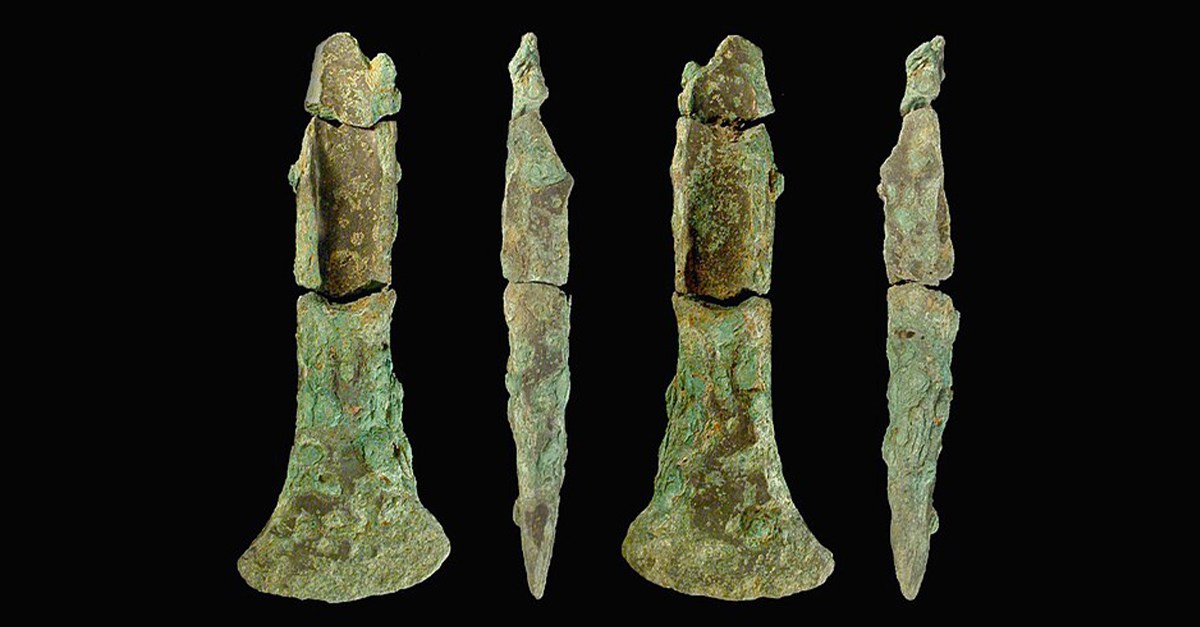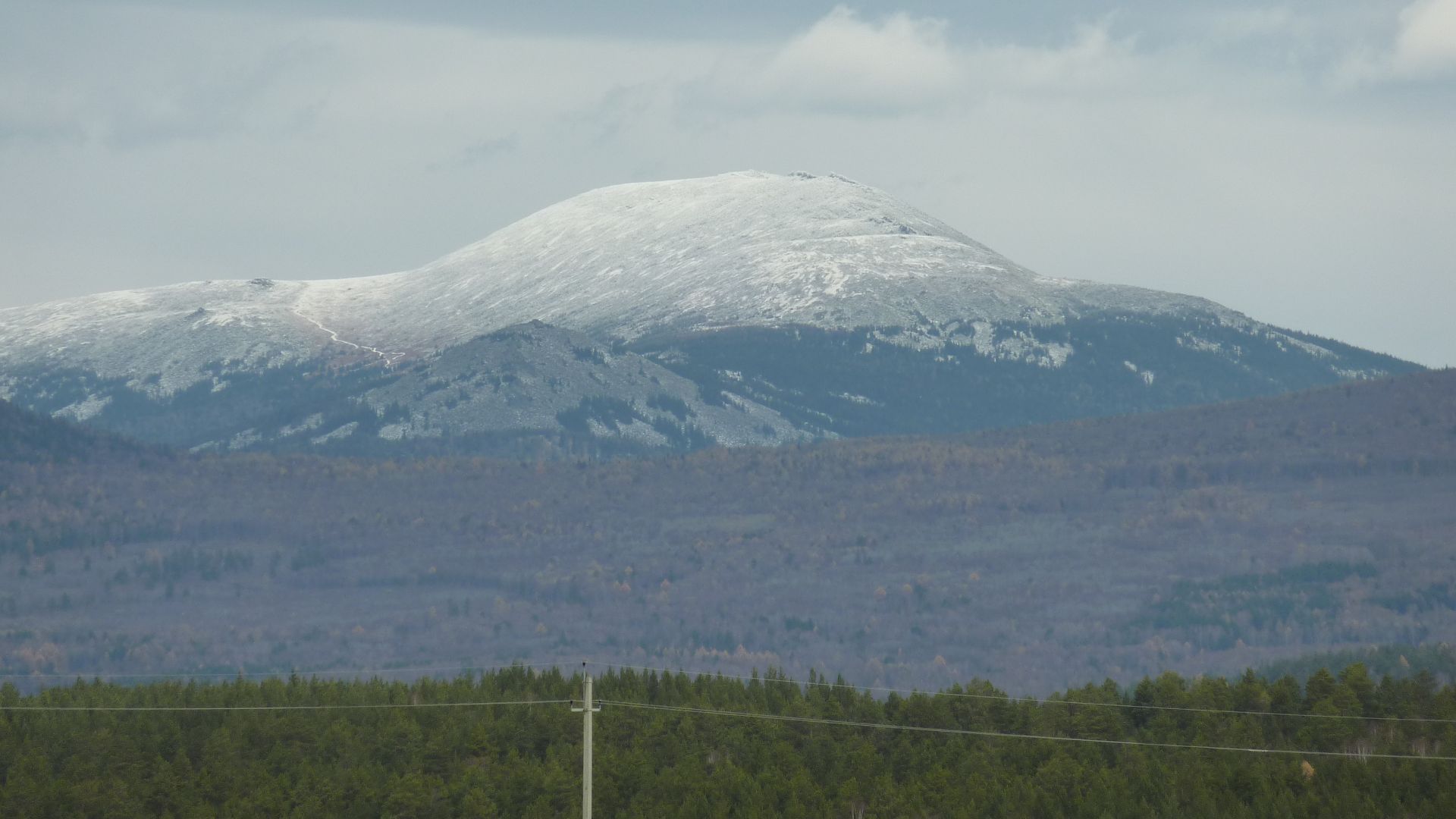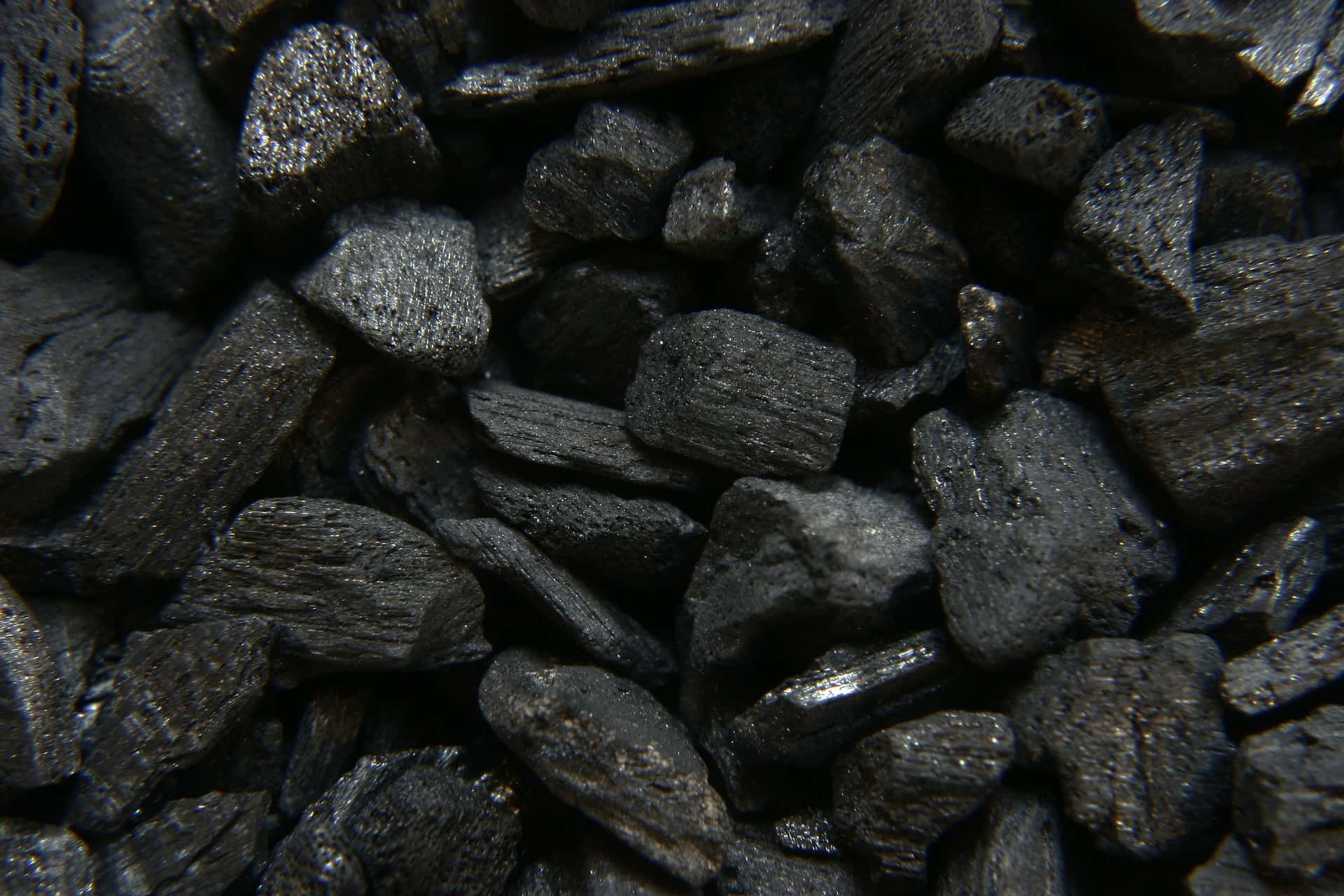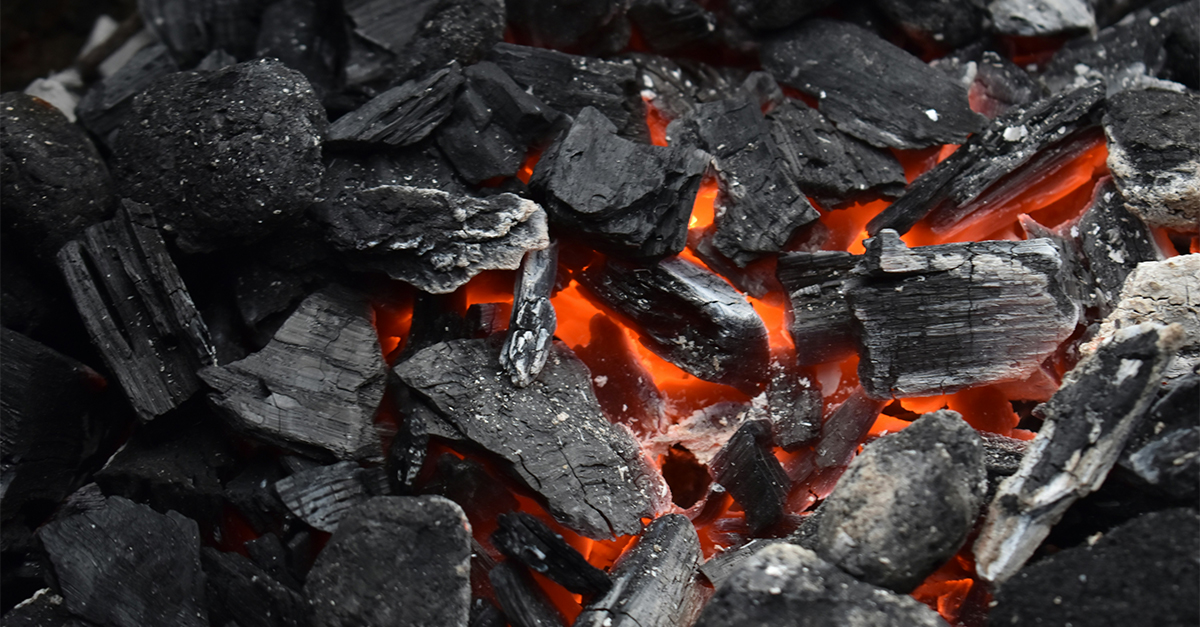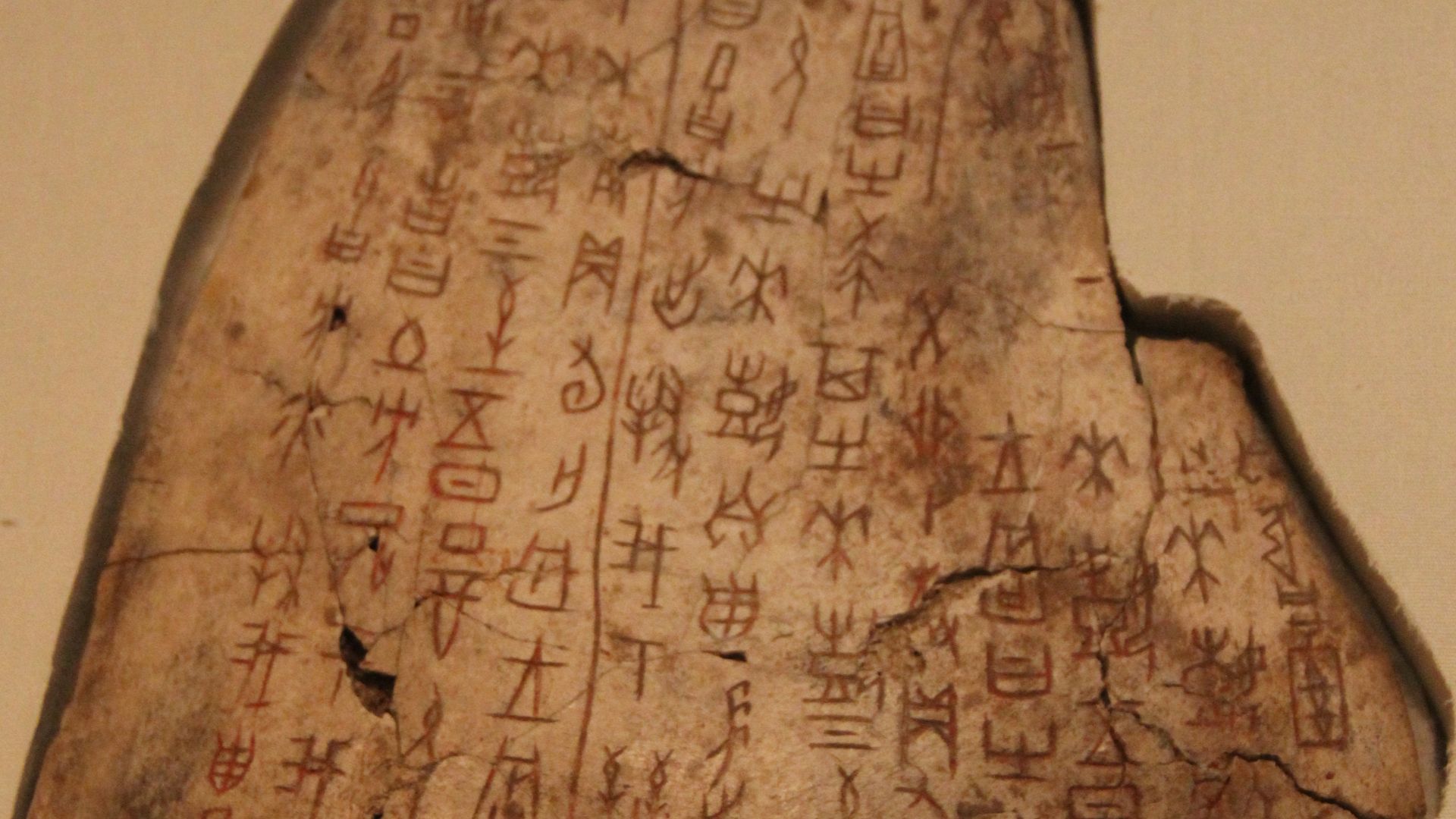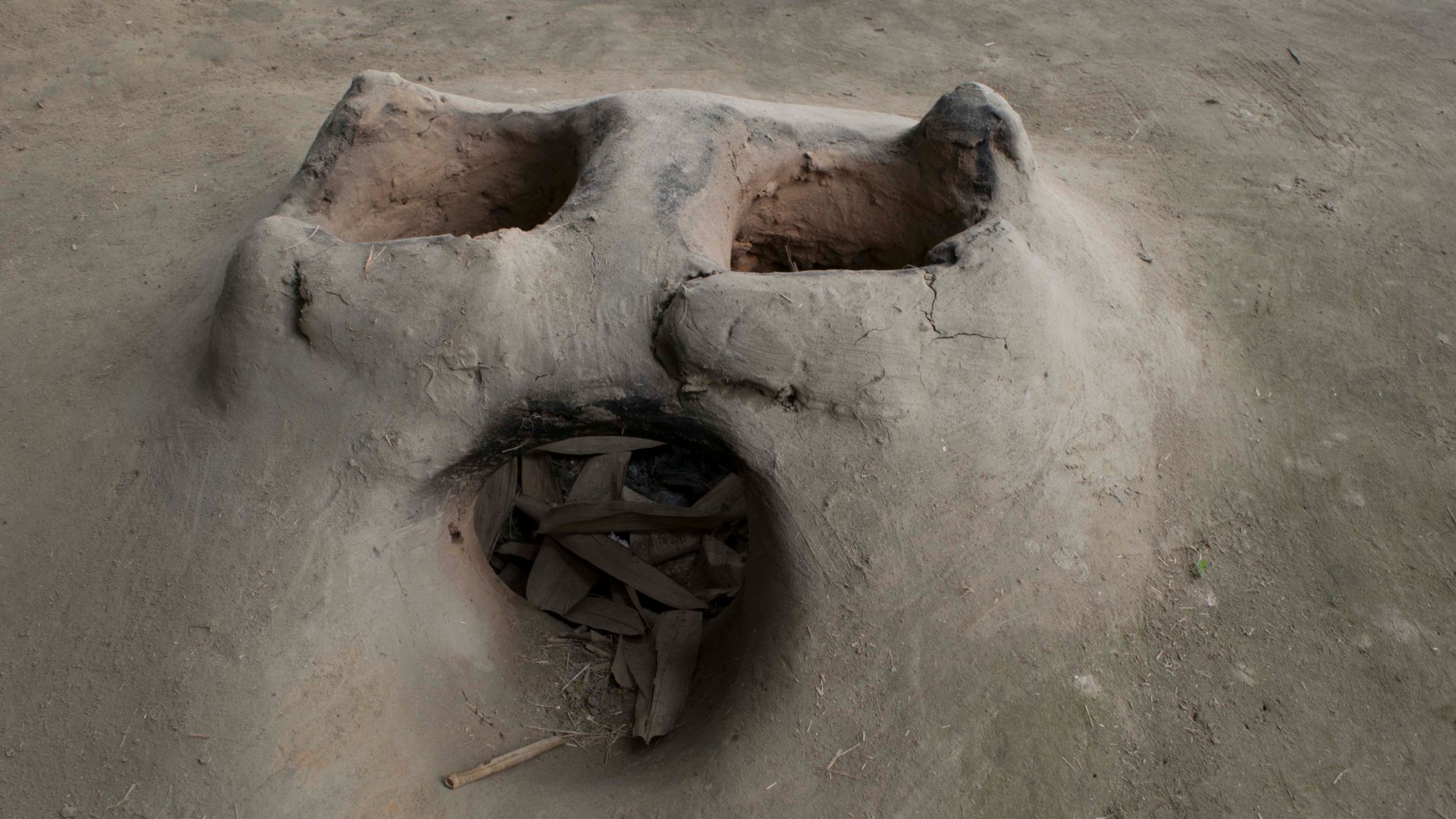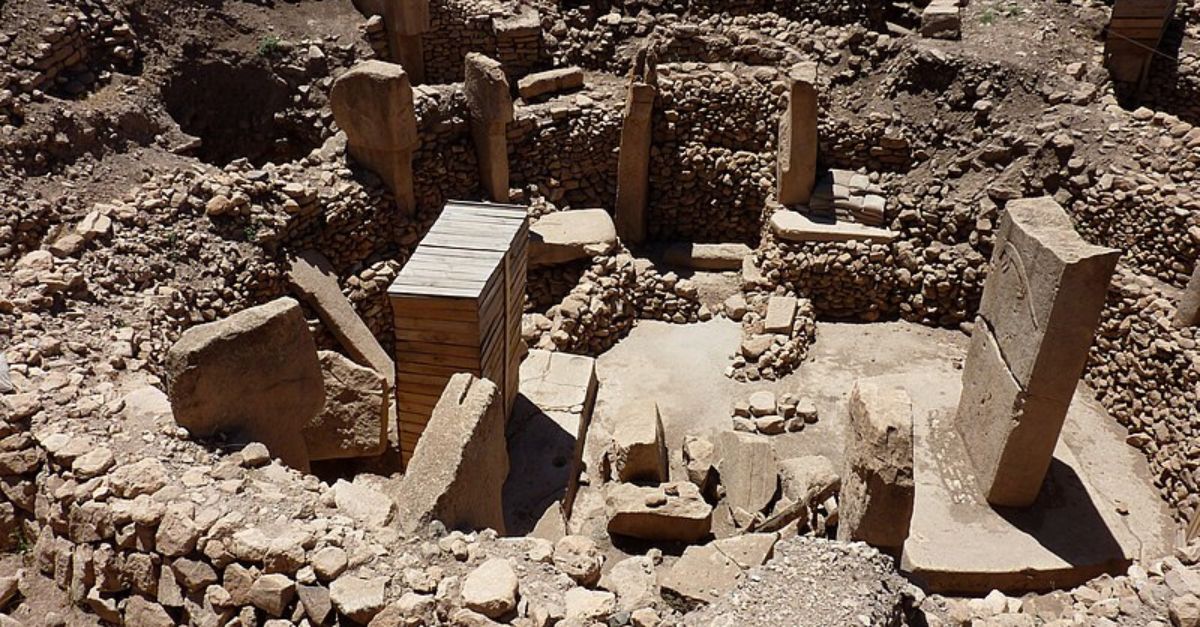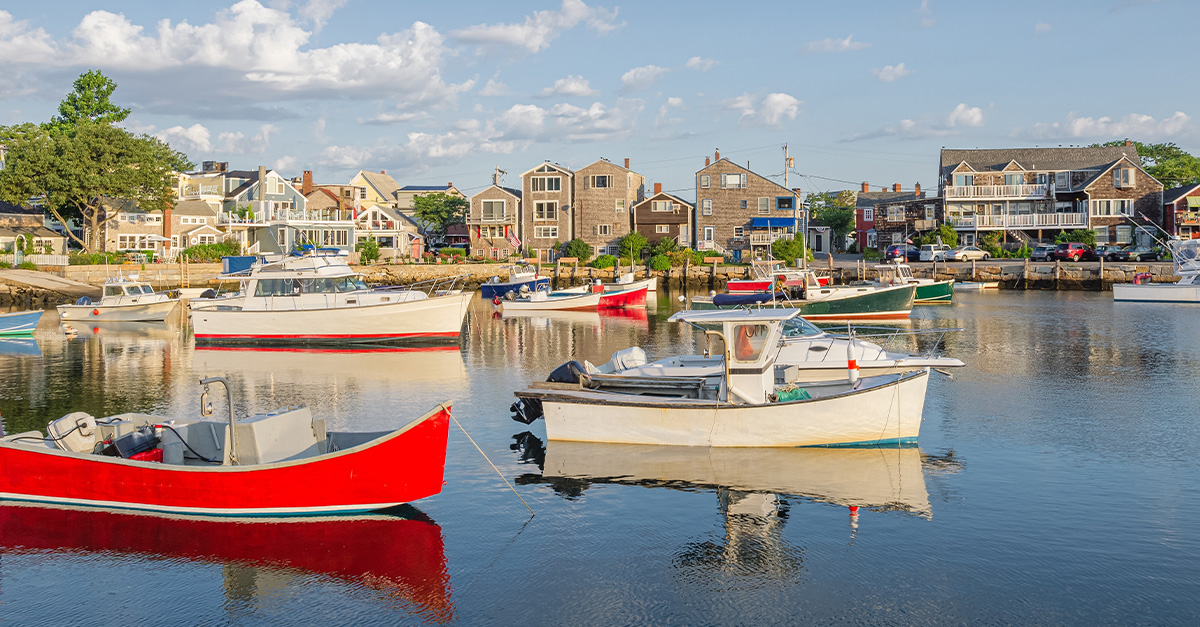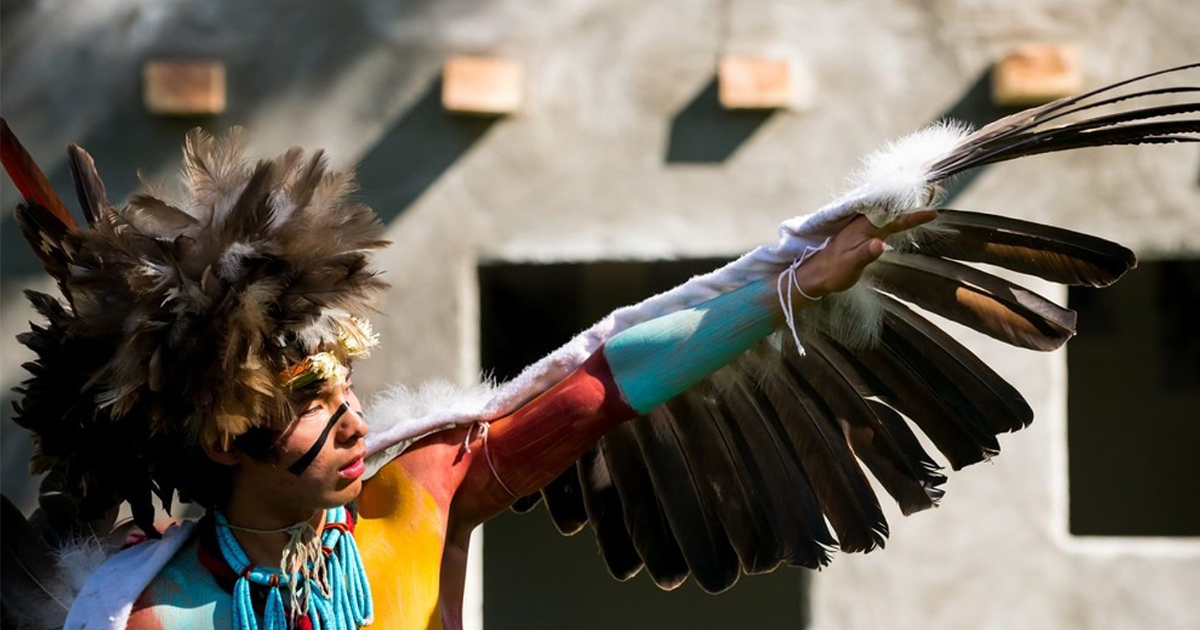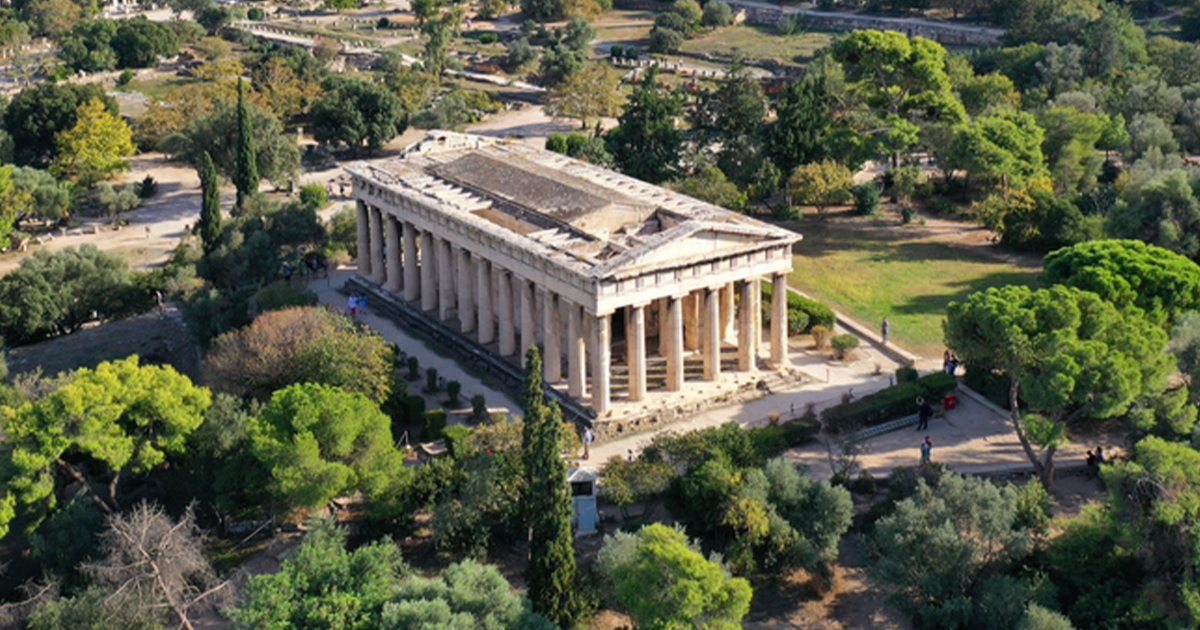Mining The Depths
Kargaly’s giant copper mine spanned the end of the Copper Age in the fourth millennium ВСЕ to the dramatic end of the Bronze Age in the second millennium. Situated in the Ural Mountains, Kargaly straddled Europe and Asia, producing a vital component of the bronze that would advance whole civilizations. This is its fascinating tale.
Two Worlds Collide
The story begins with a continental collision that made copper mining possible at Kargaly. In a giant geological confrontation 250 million years ago, a supercontinent called Laurasia, now making up most of Europe, slowly bulldozed over island chains and rammed into Kazakhstania.
 Lennart Kudling, Wikimedia Commons
Lennart Kudling, Wikimedia Commons
From Sea To Sky
The conjoining of this supercontinent and its smaller sparring partner thrust former coastlines upwards to form the Urals. The force of continental drift inserted massive segments of copper-rich ocean floor into giant mountains. Million of years later, the Copper Age would take notice.
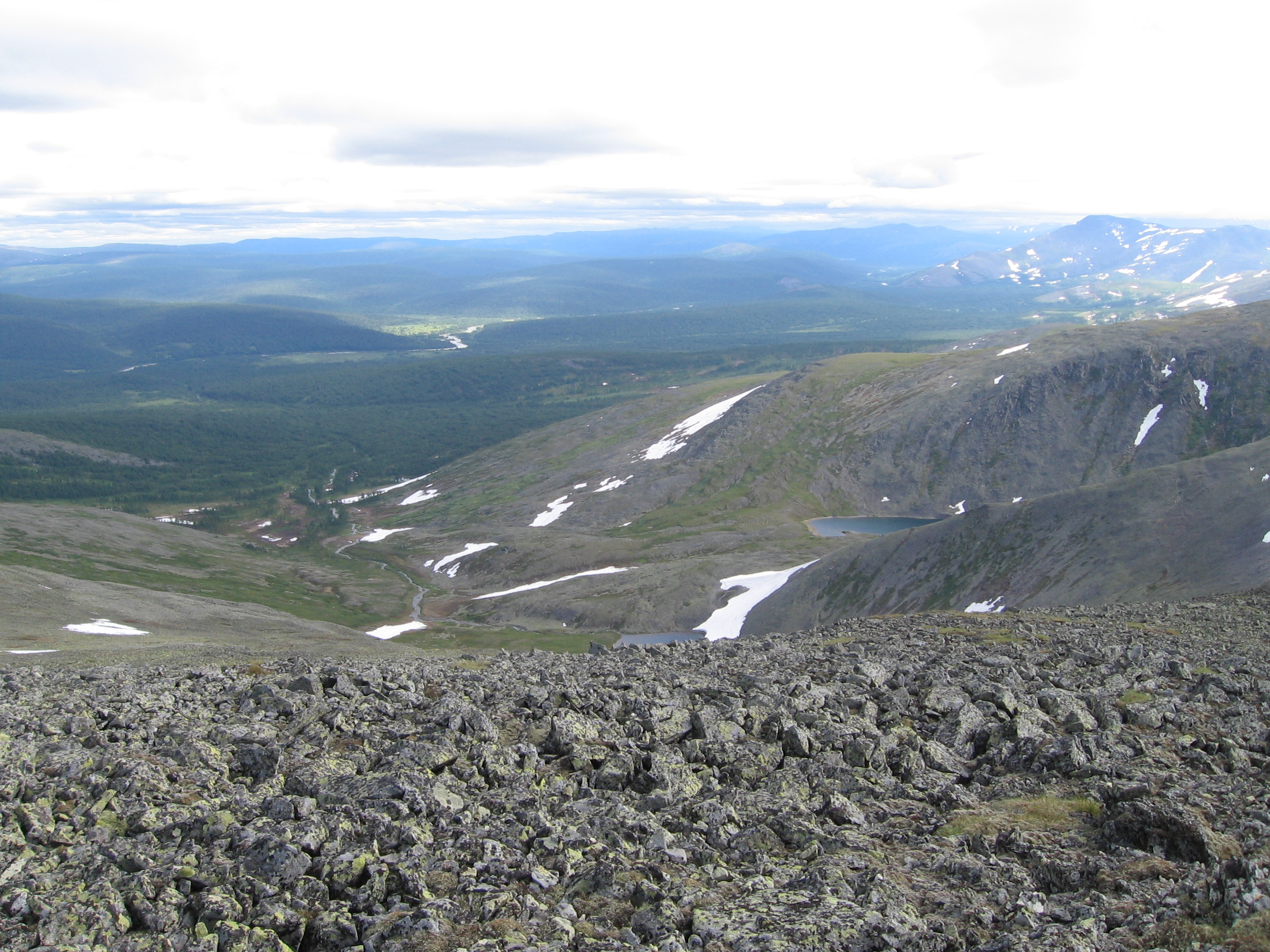 ugraland , CC BY 2.0, Wikimedia Commons
ugraland , CC BY 2.0, Wikimedia Commons
Tools For The Job
Prehistoric humans developed increasingly sophisticated stone tools, culminating in the Late Stone Age known as the Neolithic. Around the fifth or fourth millennium BCE, humans started to shape copper deposits into tools and ornaments. Then they figured out how to smelt the metal.
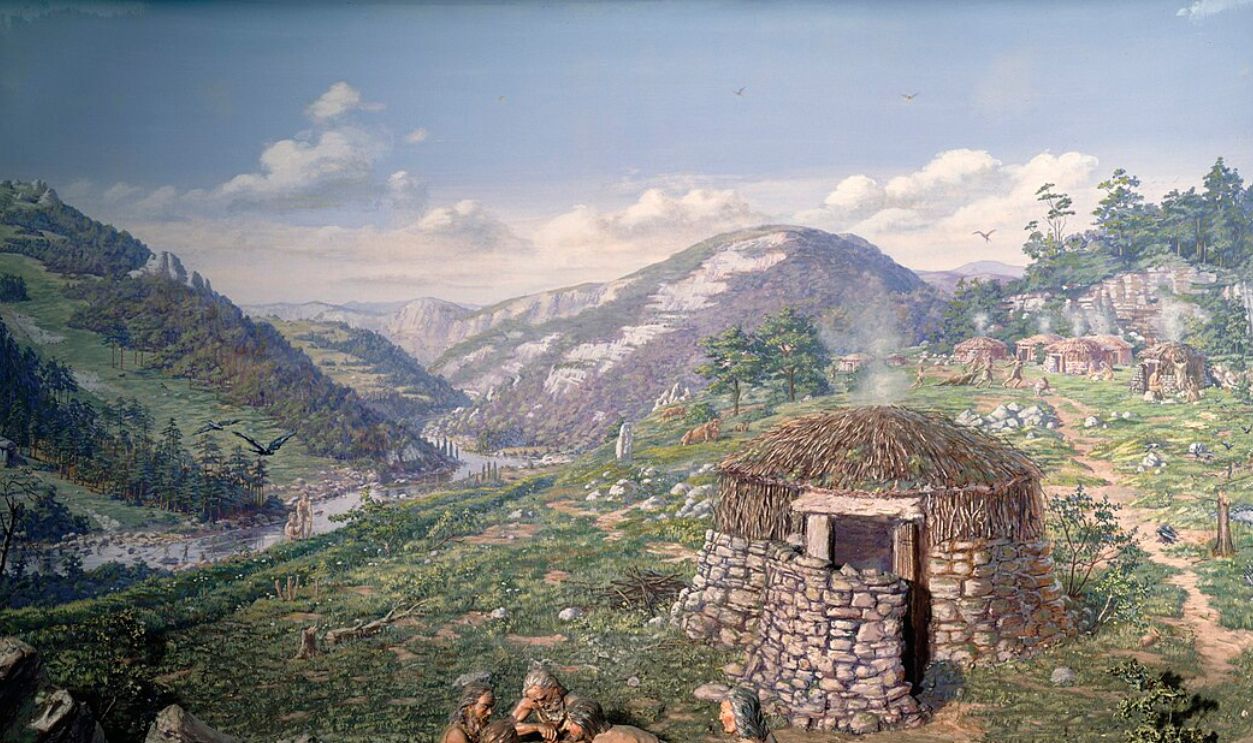 Unknown Author, CC BY 4.0, Wikimedia Commons
Unknown Author, CC BY 4.0, Wikimedia Commons
The Copper Innovation
Molten copper could be poured into molds to create tools and weapons. It was near the end of the Copper Age, around the fourth millennium BCE, that the nomadic tribes of what’s now southern Russia decided to excavate copper from the Urals with great determination.
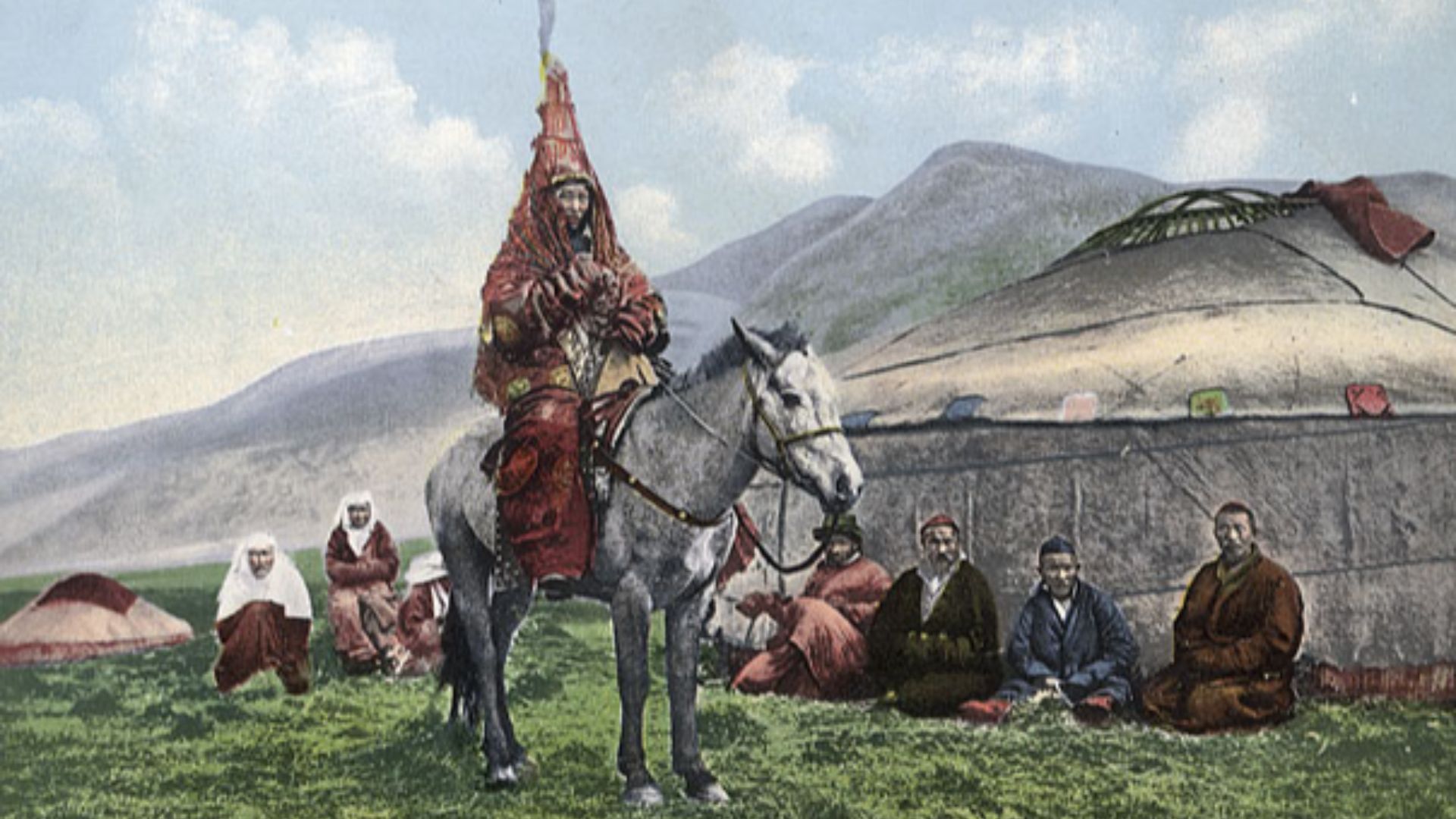 Sergei Ivanovich Borisov, Wikimedia Commons
Sergei Ivanovich Borisov, Wikimedia Commons
Premium Sandwich
The Urals contained sandwiched layers of sedimentary and volcanic rock, with the sedimentary layers containing the valuable copper. Initially, the nomads dug at the copper on or near the surface. It was tough work, and the landscape was brutal. But they turned to the gods for help.
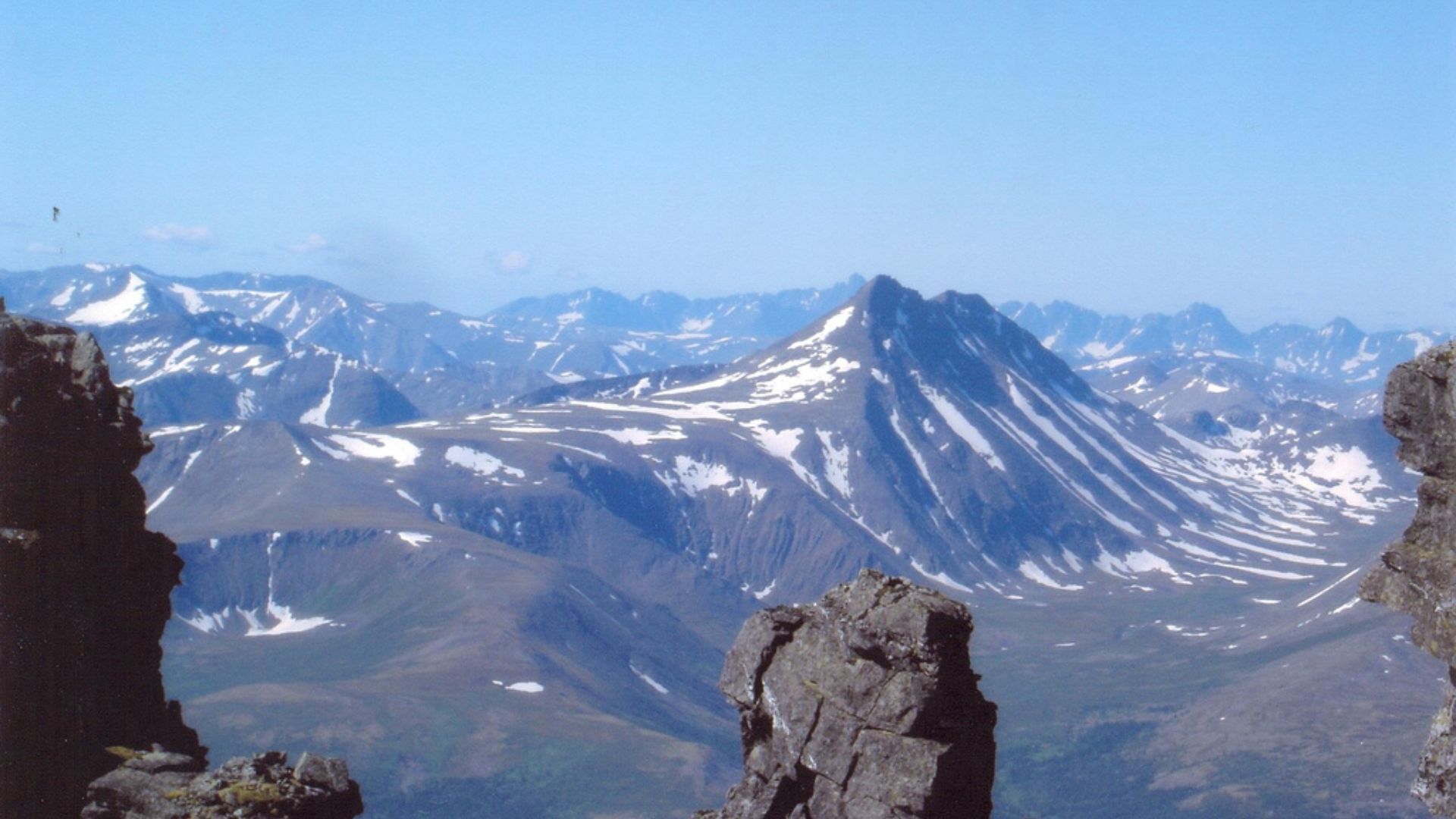 ugraland [1], Wikimedia Commons
ugraland [1], Wikimedia Commons
Prized Bronze
Copper was useful, but had a big flaw: it was soft. But prehistoric metallurgists discovered a trick. They could combine copper with tin to make bronze. The discovery of this strong alloy accelerated the development of multiple civilizations in the Bronze Age, and Kargaly was key.
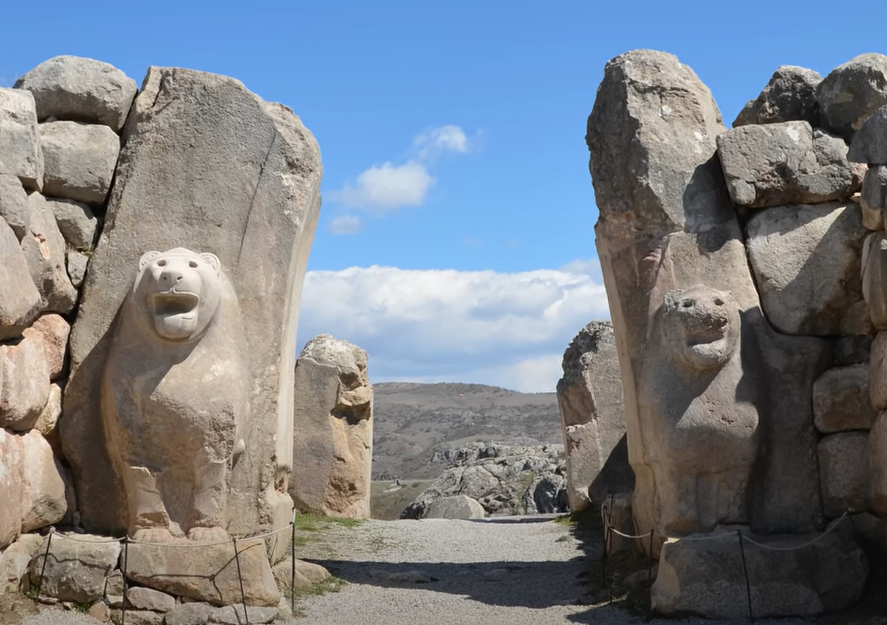 The Bronze Age Collapse - Mediterranean Apocalypse, Fall of Civilizations
The Bronze Age Collapse - Mediterranean Apocalypse, Fall of Civilizations
No Garden Plots
But the steppes were an unforgiving environment. The invention of farming that had swept through much of the world bypassed the southern Urals. Neither the land nor the climate made agriculture a promising venture. And the same factors made for brutal mining conditions.
Charcoal On Demand
Miners had to deal with bitter cold, and smelting requires heat, such as by burning wood. But charcoal was also crucial. By covering a wood pile with earth, perhaps also with branches and straw, these prehistoric experts could prevent burning wood from turning directly into ash.
Raising The Temperature
This was a critical component of Kargaly’s operations because normally wood does not burn hot enough to smelt copper. Charcoal, however, burns at a higher temperature. But trees were a rare commodity on the wide-open plains of the steppes. And finding water also loomed large.
Vital Imports
Fortunately, being nomadic, the Kargaly clans were well versed in moving goods around. They likely transported water on their own, and perhaps traded their copper for the wood they needed to smelt more. They also likely took animals as payment for copper, serving various purposes.
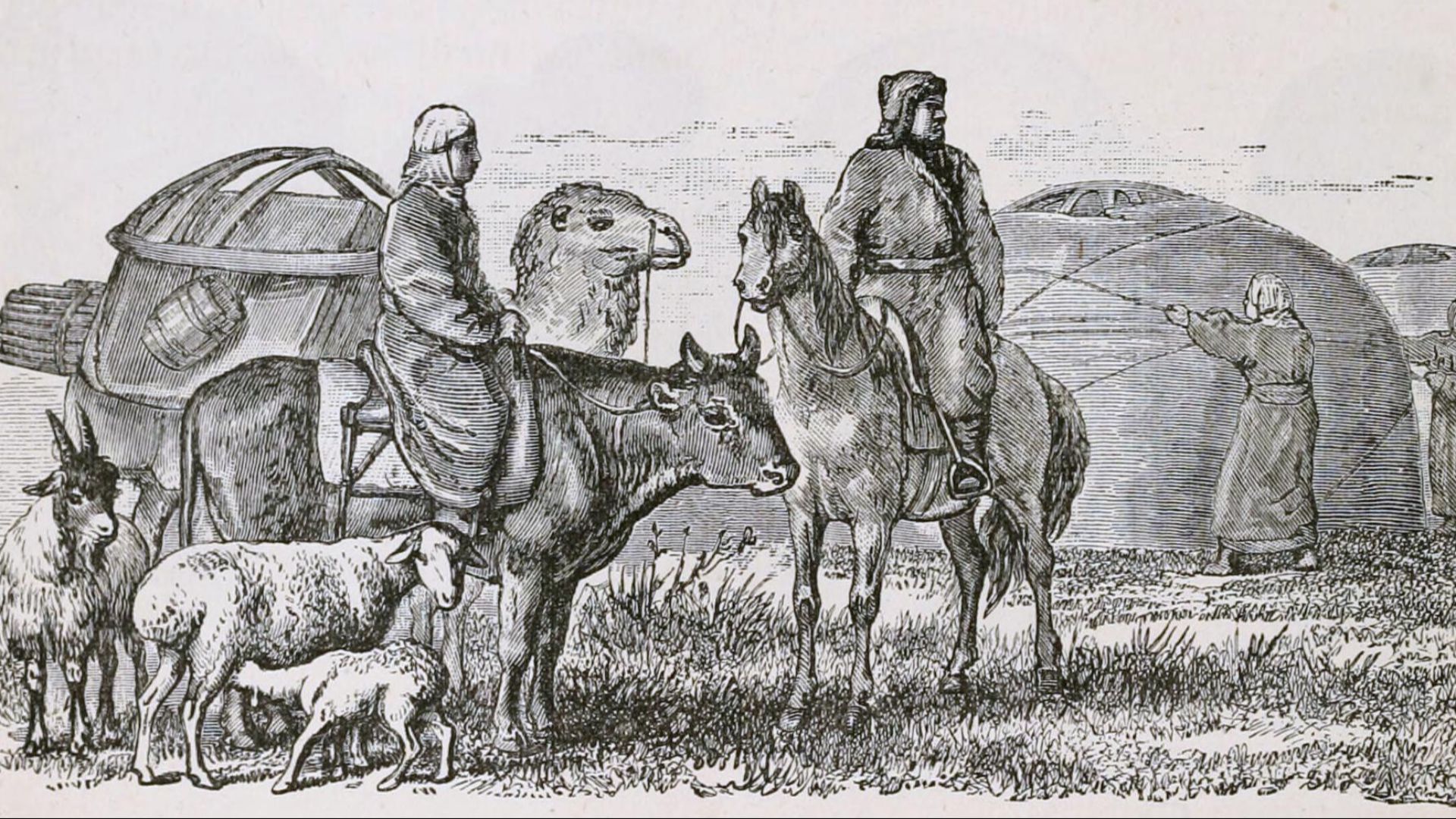 Publisher New York Ward, Lock, Wikimedia Commons
Publisher New York Ward, Lock, Wikimedia Commons
Animal Products
Without local agriculture, the animals they imported were vital to make sure miners and other workers were fed. Furthermore, animal skin provided clothing, and the mine’s tunnels could be lit by burning animal fat. But in these dangerous times, gods would have to be placated too.
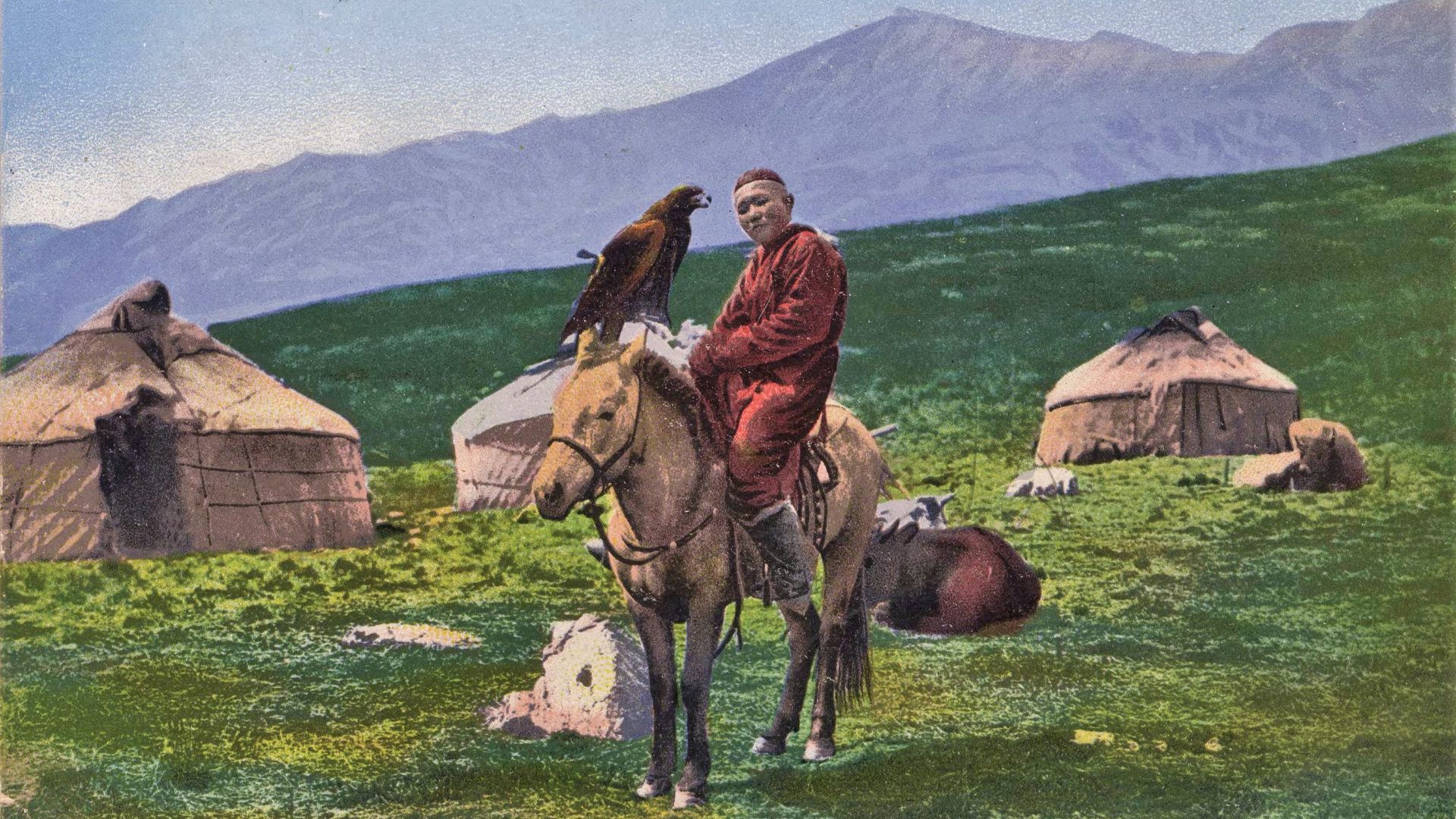 Sergei Ivanovich Borisov, Wikimedia Commons
Sergei Ivanovich Borisov, Wikimedia Commons
The Power Of Sacrifice
Animals were also used as sacrifices to please heavenly and earthly powers, and artifacts reflected their importance. Oracle bones helped the divinatory experts predict conditions and recommend actions. And, whether made of bone, stone, or metal, artifacts played another role.
A Symbolic Birth
Common through the Eurasia of the Bronze Age were items representing masculine and feminine beings and objects. To remove metals from Mother Earth was like the act of giving birth, with frequent and elaborate rituals helping to ensure success in this serious business.
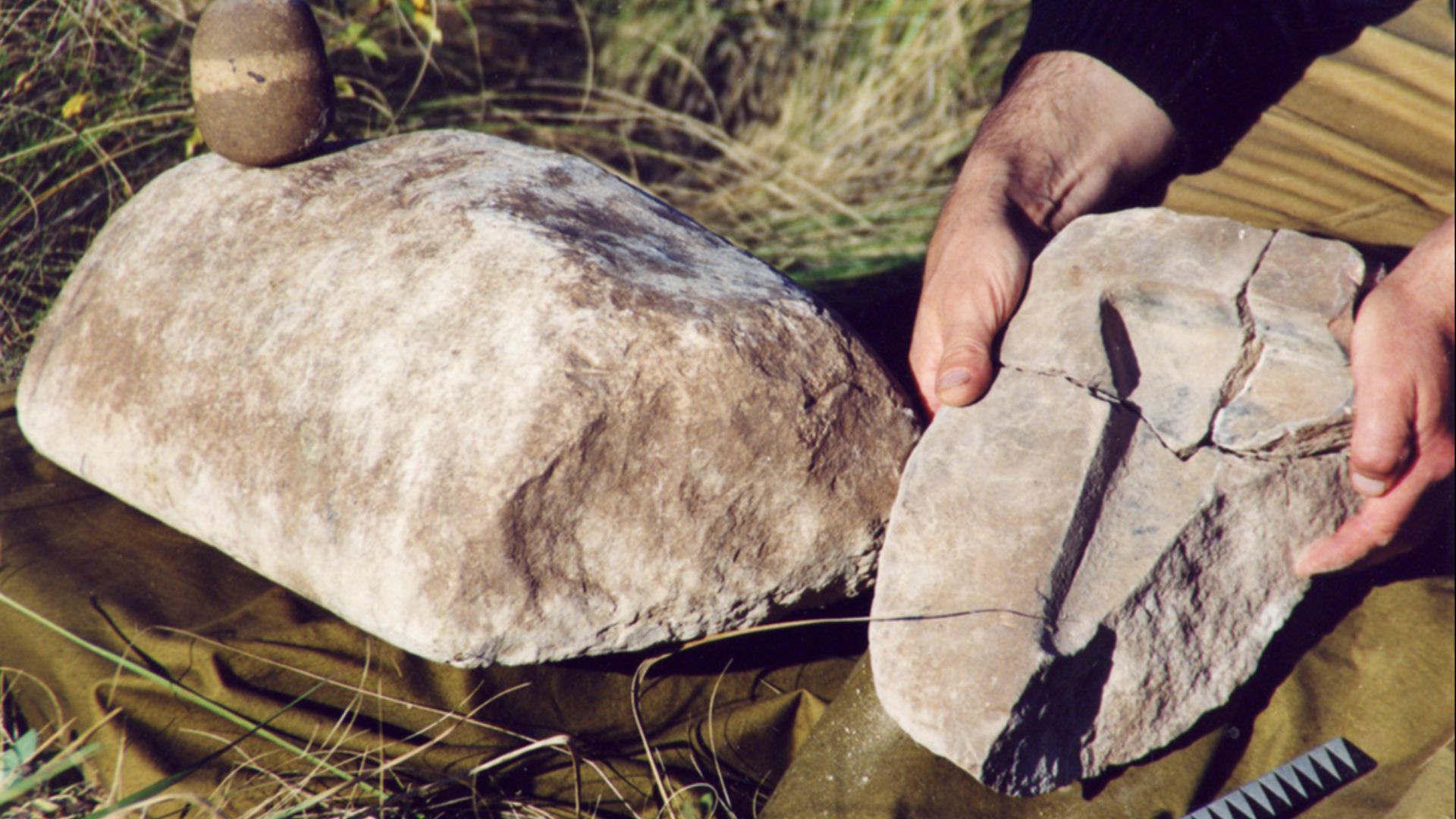 Chernykh Evgenij, Wikimedia Commons
Chernykh Evgenij, Wikimedia Commons
Grave Concerns
And this serious business involved experts who were clearly valued. The graves of the Kargaly inhabitants reflect the status of different classes of people. The metalworkers were the elite experts in their craft, and so were often buried with the most valuable of the artifacts found.
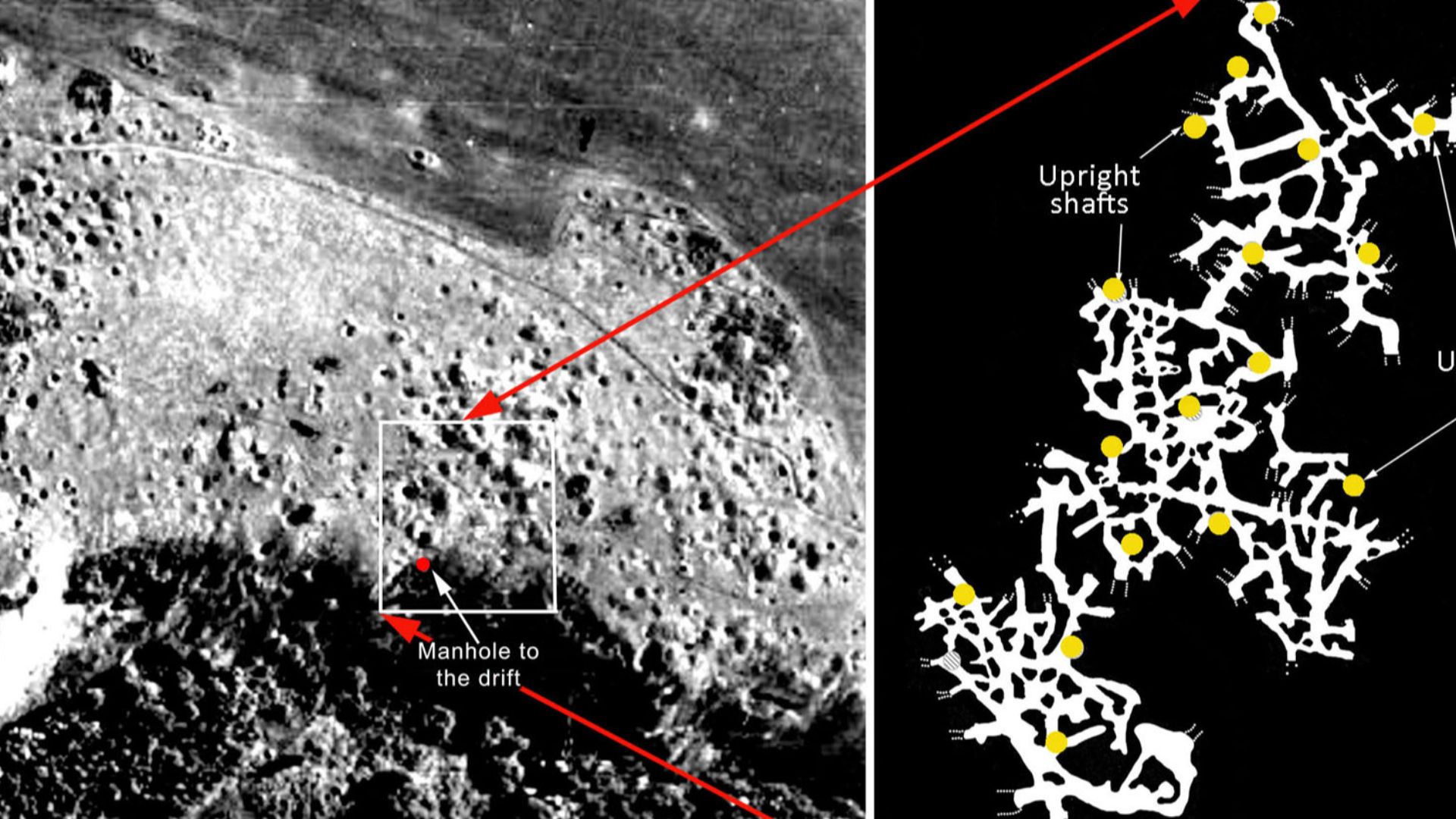 Chernykh Evgenij, Wikimedia Commons
Chernykh Evgenij, Wikimedia Commons
Following The Steps
And these experts had to guide workers through a series of complicated stages to extract the ore and turn it into refined copper. The first step was producing the charcoal that was so important for smelting copper. It could boost temperatures to 1,800°F (1,000°C) or even higher.
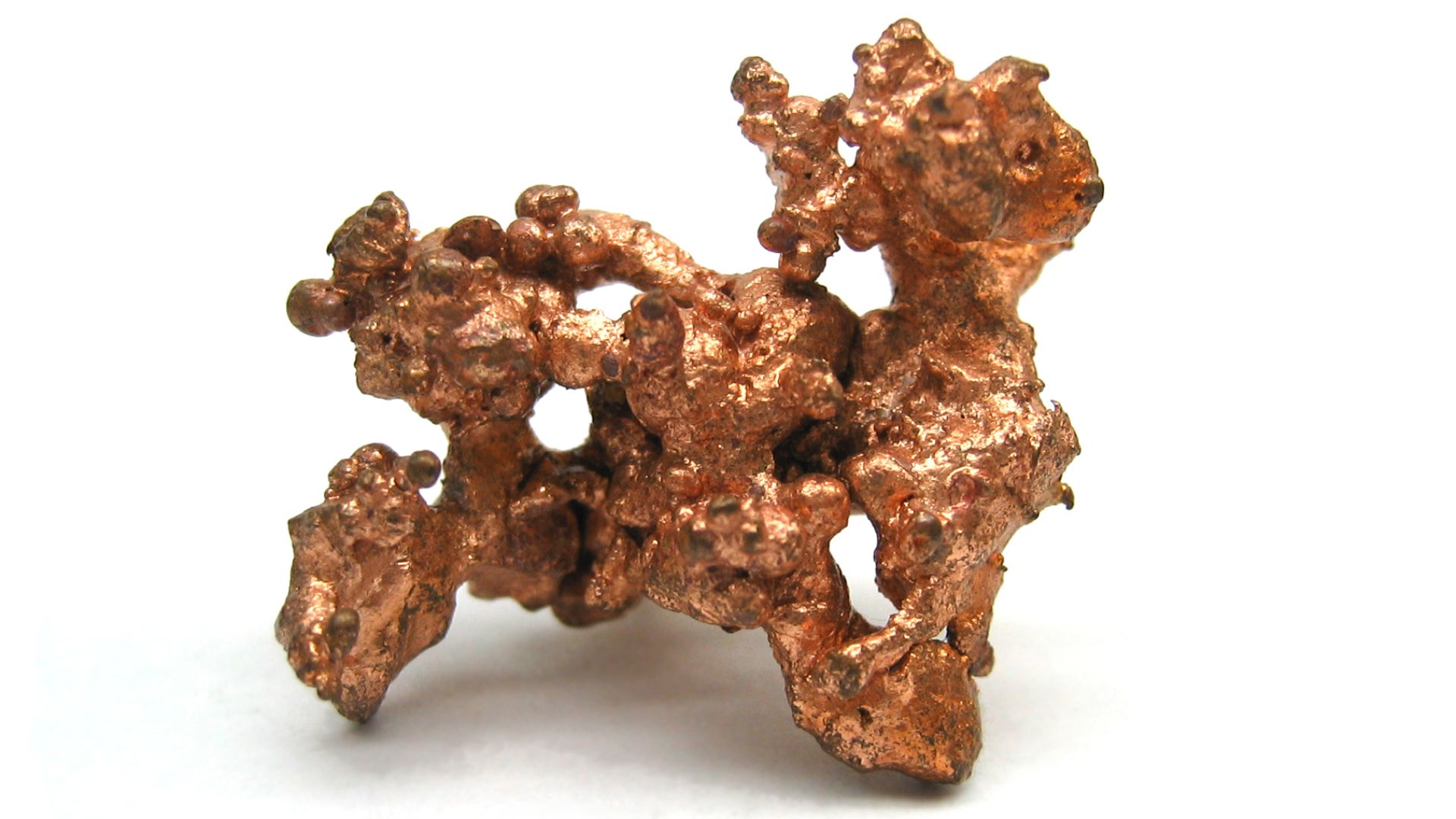 Jonathan Zander, Wikimedia Commons
Jonathan Zander, Wikimedia Commons
Retrieving The Ore
Next up: processing the copper ores. The ores were mostly malachite and azurite, mined from the sedimentary rocks of the mountain range. Miners used stone and bronze tools to get at the ore. Then it would be broken into smaller pieces, and perhaps refined with some initial roasting.
Smelting Time
Now was the time for the actual smelting, which could take place in a pit furnace, or a clay furnace situated in a shaft or on the ground. Workers would prepare layers of ore separated by layers of charcoal. The charcoal would be lit, and bellows or blowpipes would feed the fire.
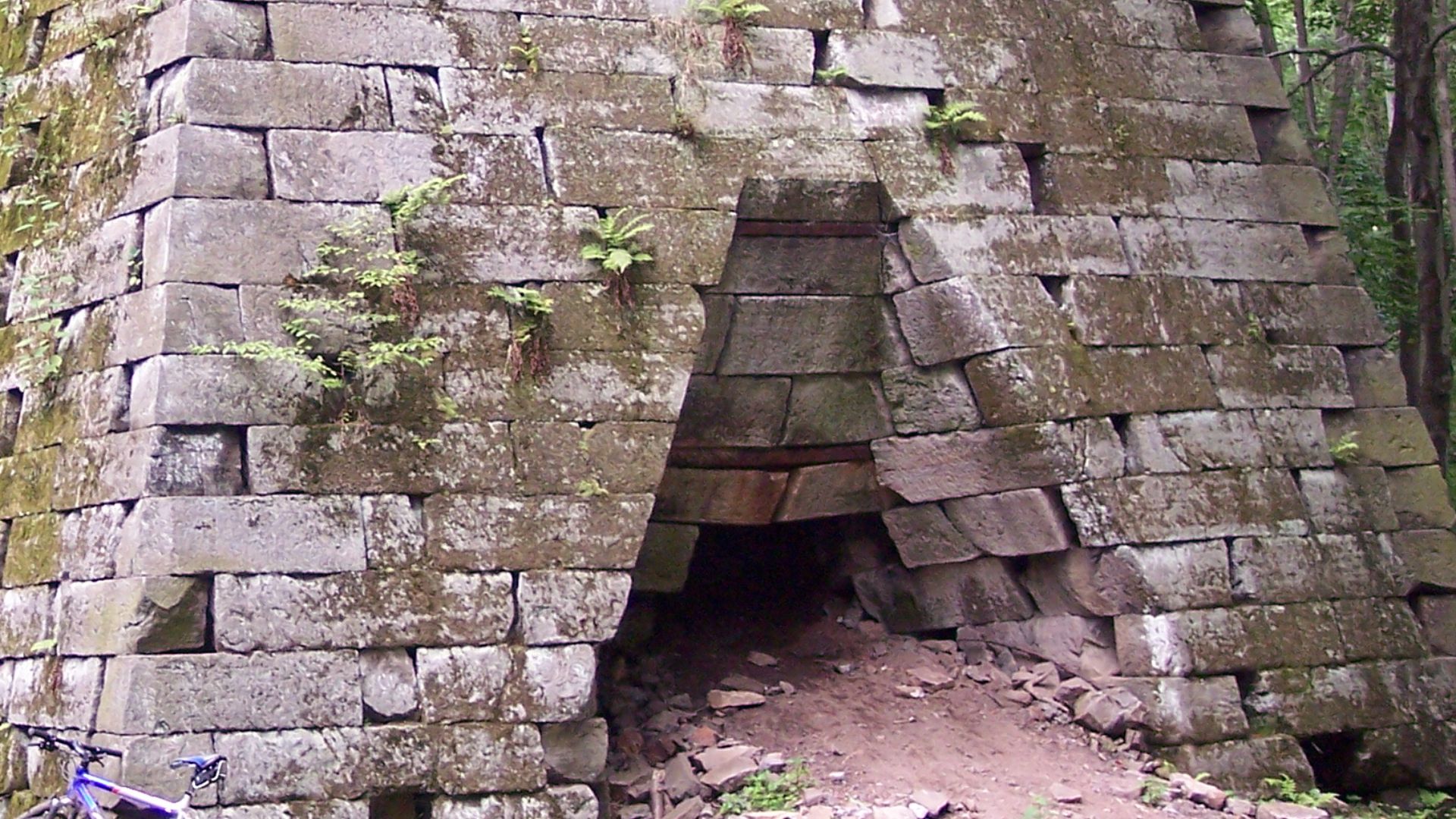 Brian Masney, Wikimedia Commons
Brian Masney, Wikimedia Commons
Separation And Purification
At a high enough temperature, the minerals in the ore would break into their constituent parts. Heating would separate the copper from impurities in the oxide ore, as well as the flux added to help the process along. Sulfide ores first had to be converted to oxide ore through roasting.
 James St. John, Wikimedia Commons
James St. John, Wikimedia Commons
A Heap Of Waste
Impurities in the original ore along with fluxes like silica combined to form slag as they cooled. This produced a glasslike waste product that would accumulate at the site. Meanwhile, the copper-rich ore could be smelted again and again until the copper reached the desired purity.
 S. Rae from Scotland, Wikimedia Commons
S. Rae from Scotland, Wikimedia Commons
Product Line
Once the metalworkers had something close to pure copper, they could pour the molten copper into clay molds to produce ingots, tools, or artistic creations. It’s believed that rituals and symbolism would accompany every stage of smelting, as spirituality infused the process.
 Chris 73 / Wikimedia Commons, Wikimedia Commons
Chris 73 / Wikimedia Commons, Wikimedia Commons
Spread Wide And Far
The Kargaly operation was so important that its copper spread through a vast area, mostly west of the region. A so-called Copper Way formed a commercial network covering 400,000 square miles (1 million square kilometers) of trading routes, with eager customers all along the way.
 Chernykh Evgenij, Wikimedia Commons
Chernykh Evgenij, Wikimedia Commons
Digging Deep
And the scale of the mining operations at Kargaly, the largest of its kind during the Bronze Age, is apparent. Archaeologists have counted over 35,000 mining shafts, pits, and tunnels. After exhausting the deposits on the surface, miners dug shafts up to 130 feet (40 meters) deep.
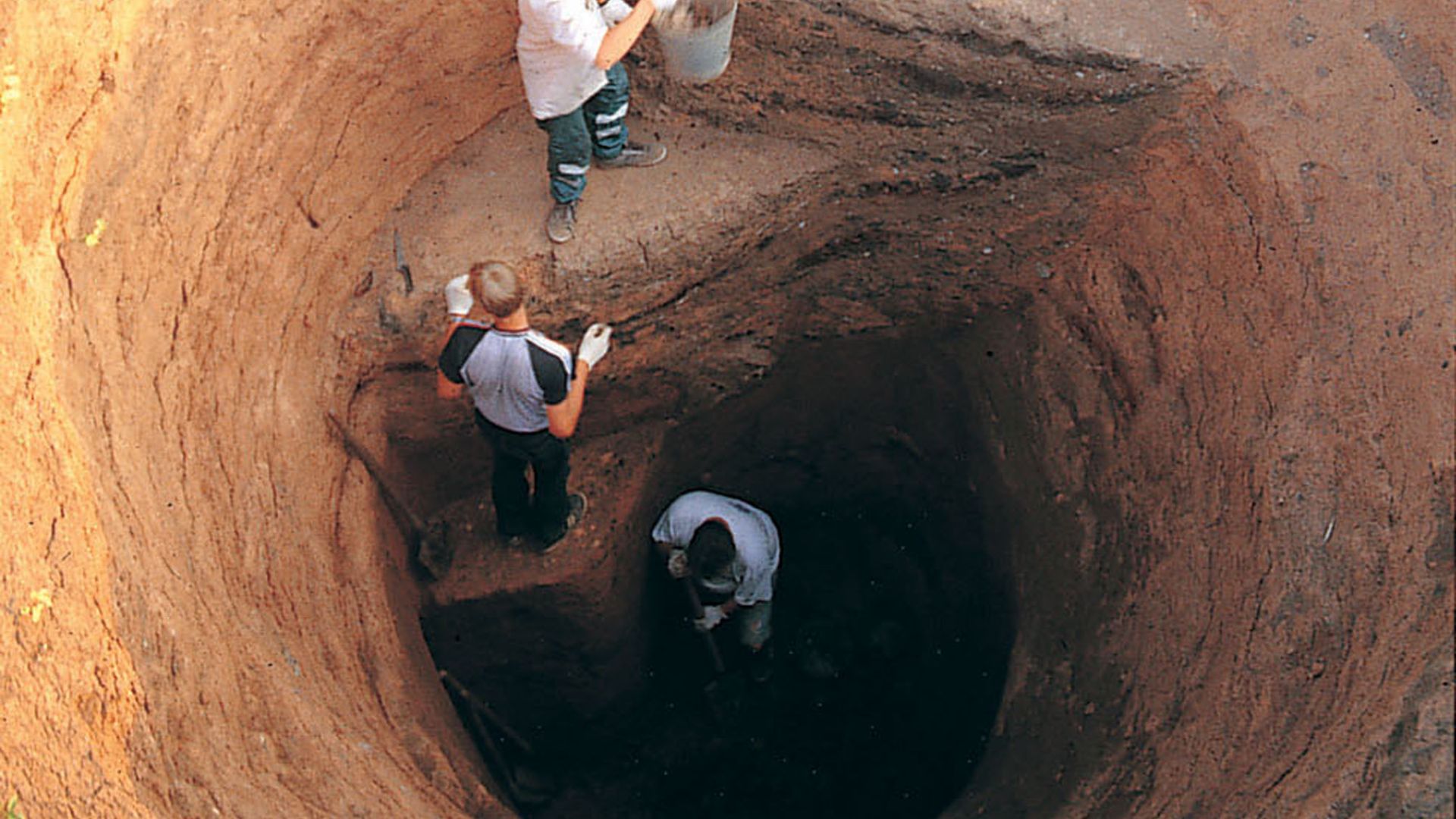 Chernykh Evgenij, Wikimedia Commons
Chernykh Evgenij, Wikimedia Commons
Following The Ore
Great ingenuity can be seen at all stages of the mining and refining process. Elaborate tunnels and chambers followed the ore wherever it could be found. Test pits and shafts probed possible locations of ore, which required perseverance due to the unpredictable location of the copper.
 S. Rae from Scotland, Wikimedia Commons
S. Rae from Scotland, Wikimedia Commons
Prehistoric Tool Time
A wide range of stone tools point to a sophisticated understanding of the mining process and how best to crush ore and cast molds, with impressive forging hammers and anvils at the center of the process. And all these tools were used in harsh conditions not for the faint of heart.
 Limelightangel, Wikimedia Commons
Limelightangel, Wikimedia Commons
Vital Work
Archaeologists have found remnants of 20 settlements in the Kargaly area, as well as burial mounds (called kurgans). The communities were all situated in the ore field, near where mining or smelting was taking place, an indication of how vital the mining of copper was to this society.
Low-Water Mark
The Kargalka River and tributaries were nearby, providing much-needed water, but not enough for the full scale of Kargaly’s mining operations. Gorny, which is the most thoroughly examined community on the ore field, is near the Usolka River, and was a kind of hub for mining activities.
 Сергей Метик, Wikimedia Commons
Сергей Метик, Wikimedia Commons
Never Enough
The ore field is located in the present-day Orenburg region, along the southeastern edge of European Russia. Forests cover less than 2% of the area, and water sources are limited. Even though settlements were close to ore, wood, or water, local supplies were never enough.
Mainly Meat
Kargaly communities were able to trade with other steppe communities, as well as trading further afield. It seems the miners’ diet mainly depended on livestock obtained as trade for copper. The evidence shows no one was farming vegetables in the area during the Bronze Age.
Increasing Flow
The overall picture is one of a major “prehistoric industrial center,” with various stages of the mining process integrated into a sophisticated flow. The Kargaly operation managed to keep growing, peaking a little before the end of the Bronze Age, when Srubnaya culture dominated.
Waste Reduction
All told, around 55,000 to 120,000 tons of copper were mined, and with those results came a lot of waste. Around 250 million tons of rock had to be cast aside to get to the copper, with refining and smelting leaving huge piles of slag. And what trees had been around were soon cut down.
 Chernykh Evgenij, Wikimedia Commons
Chernykh Evgenij, Wikimedia Commons
End Of An Era
With a huge amount of water and wood required, eventually the mining operations became unsustainable. Around 1400 BCE, the last copper was extracted at Kargaly as the Bronze Age neared its conclusion. It seems environmental depletion and devastation had become too much.
 Almatoswiki, Wikimedia Commons
Almatoswiki, Wikimedia Commons
Escape From Mycenae
Though it is possible to construct another theory. The so-called Late Bronze Age collapse was a widespread disaster visited upon ancient civilizations of the eastern Mediterranean and Near East. Residents of Mycenaean, Hittite, Minoan, and Egyptian cities fled to farms and villages.
 Andy Hay from UK, Wikimedia Commons
Andy Hay from UK, Wikimedia Commons
Lost Letters
The loss of urban civilization saw a collapse in population levels, trade, and literacy. Greek civilization lost its writing system and many forms of art, for instance. Earthquakes, drought, peasant revolts, and the collapse of trade routes have all been invoked as explanations.
 Chernykh Evgenij, Wikimedia Commons
Chernykh Evgenij, Wikimedia Commons
Buy Local
Palaces were abandoned, cities became ghost towns, and everything seemed to go local for a while. What followed was the so-called Iron Age, which got around the difficulty of finding and trading tin, and offered an even harder metal to boot. But getting to that point was arduous.
 Anton Yefimov, Wikimedia Commons
Anton Yefimov, Wikimedia Commons
Out Of Stock
It seems the Bronze Age collapse happened around 1200 BCE, a couple of centuries after Kargaly closed shop. It likely wasn’t widespread catastrophes that shut down Kargaly’s operations. It was instead the local catastrophes of deforestation, waste, and scarce water.
 Anton Yefimov, Wikimedia Commons
Anton Yefimov, Wikimedia Commons
Staying Power
Nomadic tribes abandoned mining, but not their lifestyle or their lands. They continued to rule the steppes for millennia, until the Russian Empire took over. The new rulers reactivated the mine in the 18th century, and copper trade took off again, reaching even England and France.
 Vasily Sadovnikov, Wikimedia Commons
Vasily Sadovnikov, Wikimedia Commons
Data Mining
But it’s the Bronze Age activities at Kargaly that truly capture the imagination. At around 190 square miles (500 square kilometers), the mining area was enormous. And as an archaeological site, the region provides a vivid look at the harsh lives of people around 3000 to 1400 BCE.
 Anton Yefimov, Wikimedia Commons
Anton Yefimov, Wikimedia Commons
Connecting The Dots
Kargaly may also offer a cautionary tale about the consequences of environmental destruction in an age of interconnected economies. Kargaly simply couldn’t sustain itself amidst scarce supplies and poisoned pastures. And with its copper no longer traded, there’d be ripple effects.
 Anton Yefimov, Wikimedia Commons
Anton Yefimov, Wikimedia Commons
The End Of The Line
The networks that connected Bronze Age kingdoms were already collapsing, and the loss of Kargaly’s copper would presumably have accelerated the disintegration of trade routes. The ingenuity of Kargaly and the brilliance of the Bronze Age had both come to a crashing halt.
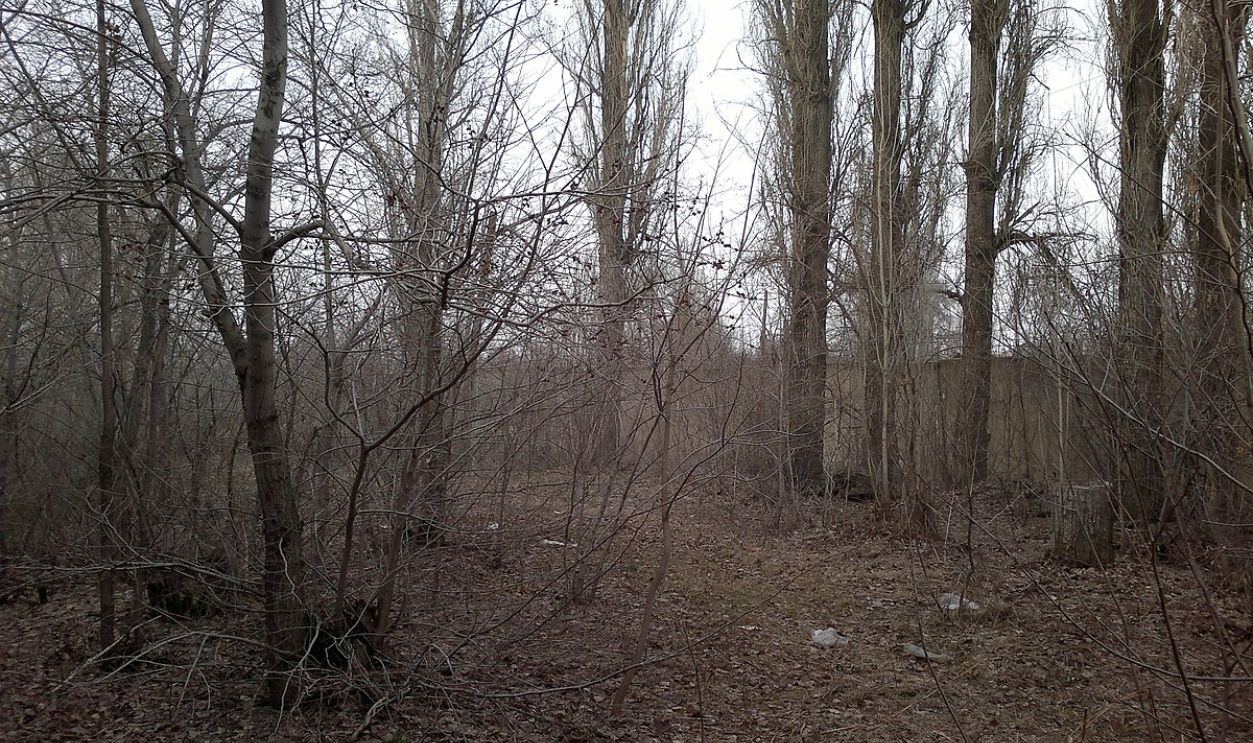 Anton Yefimov, Wikimedia Commons
Anton Yefimov, Wikimedia Commons
You May Also Like:
The Bronze Age Collapse—What It Is And Why It Happened
Unraveling The Mysteries Of Göbekli Tepe, A Pre-Pottery Neolithic Treasure Trove
We Have Proof That Neanderthal Kids Were Picking Up Fossils And Storing Them
Sources: 1, 2, 3, 4, 5, 6, 7, 8, 9, 10, 11, 12

